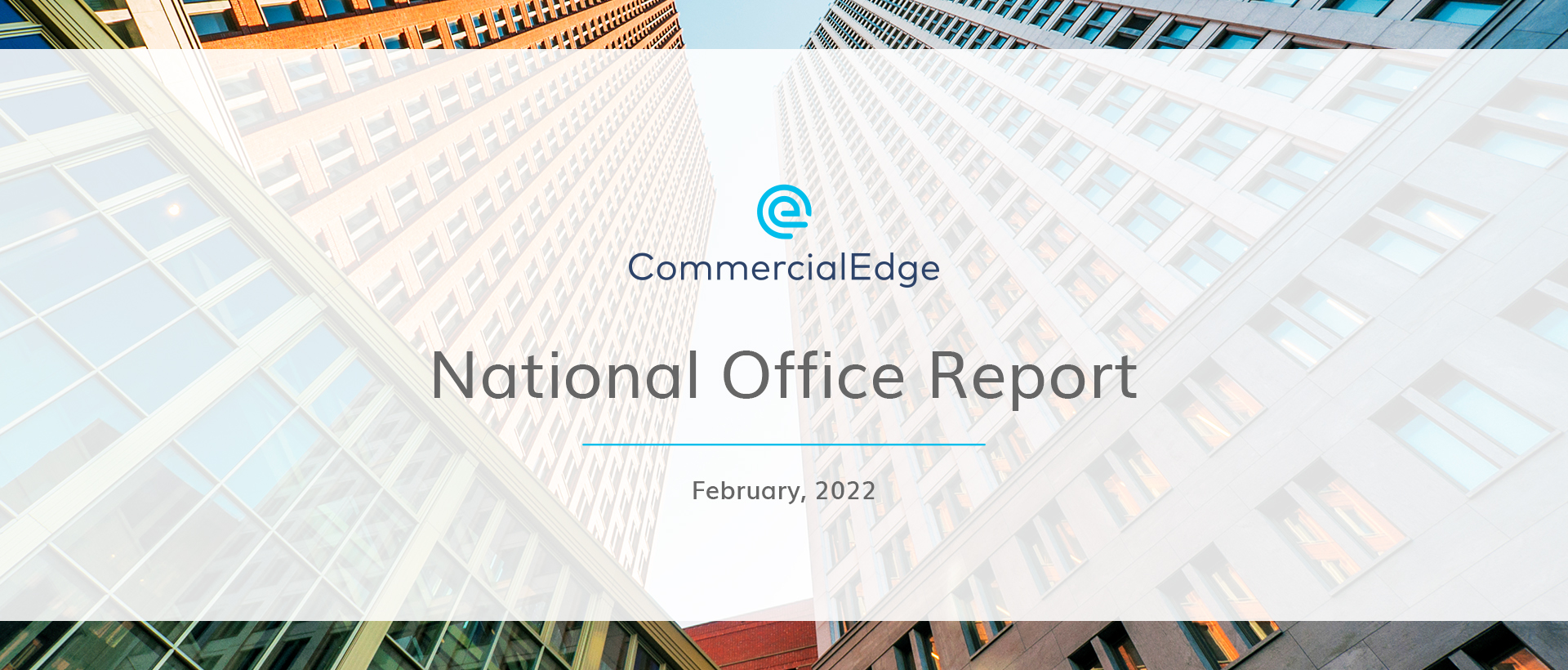Key Takeaways
- January office lease rates posted 1.2% year-over-year growth nationwide
- Average office vacancy rate climbed to 15.7% across top 50 U.S. markets
- Transactions amounted to $5.9 billion, sale price rested at $288 per square foot
- Office construction pipeline declined to 150 million square feet in January
Medical office buildings (MOBs) have been a resilient subsector throughout the pandemic, gaining increased investor and developer interest since the emergence of COVID-19. Though rates for elective and non-essential procedures declined early in the pandemic, they rebounded by the end of 2020.
According to our most recent data, more than 16 million square feet of properties that include some type of medical offices are currently under construction. Furthermore, as the U.S. population is aging, demand for MOBs is poised to grow in the coming years, especially in suburban centers, where residents will seek services closer to home.
U.S. Office Space Listing Rates Inch Up 1.2% Year-Over-Year
Across the top 50 U.S. markets, the average full-service equivalent listing rate for office space rested at $38.62 per square foot in January, up 1.2% year-over-year (Y-o-Y).
Office listing rates ranged between $22.13 per square foot and $83.52 per square foot among the markets surveyed for this report. The highest year-over-year increase was recorded in Los Angeles, where office rates rose by 8.1%, reaching an average of $41.62 per square foot in January. The Bay Area ($55.79/sq. ft.) and Tampa ($29.70/sq. ft.) shared the second spot in office rent growth, posting a 6.2% rise compared to January 2021. Listing rates for Miami office space registered the third-fastest rise, averaging $43.43 per square foot after a 5.8% year-over-year increase.
Office rates grew at a slower pace in Charlotte, where the average listing rate rested at $29.00 in January, up 0.5% Y-o-Y. Atlanta ($27.64/sq. ft.) was also among the cooler office markets at the start of the year, with office rates rising by 0.8% compared to January 2021. Meanwhile, office space in Portland hit the market for an average of $29.97 per square foot, up 1% over January 2021.
Office Vacancies Pick Up Speed in January, Rise to 15.7% Average
In terms of tenant absorption, January vacancies averaged 15.7% across the top 50 U.S. office markets, up 20 basis points (bps) compared to the previous month and 110 bps year-over-year. Since a significant percentage of the construction pipeline was started before the pandemic, and the Omicron variant further delayed returns to the office, higher vacancies are expected even in competitive office clusters.
Looking at individual markets, Boston office space boasted the tightest vacancies in January, averaging 10.7% after a year-over-year decrease of 40 basis points. Next up, Miami has been a bright spot among the top office markets in the nation overall – besides posting the third-fastest rising listing rates, the Miami vacancy rate was 13.4%, down 190 basis points compared to January 2021. The average vacancy rate in Los Angeles closely followed, resting at 13.5% in the first month of the year.
January Sales Volume Reveals Strong Start for Transactions
Nearly $5.9 billion in office transactions were completed through January, despite return-to-office delays. As such, the national average sale price for office space rested at $288 per square foot at the beginning of the year.
The Bay Area saw the strongest start in 2022, with $715 million in office sales completed through January. The market also posted one of the highest sale prices in the nation, at an average of $611 per square foot of office space. Boston ($249/sq. ft.) recorded the second-highest office sales volume: $435 million as of January. Next up, office space in Washington D.C. exchanged hands for an average of $531 per square foot, with January sales amounting to $367 million.
Starting with this month, sales volume reporting has been adjusted. Sales estimates now also include unpublished and portfolio transactions (previously not covered in this report) with sales comps based on similar local transactions. As such, comparing sales figures in this and future reports to previously published values will deliver inaccurate results. The complete sales comps criteria are available in this report’s methodology section.
More Than 150MSF of Office Space Under Construction Nationwide
Nationally, 150.5 million square feet (MSF) of new office stock were under construction by the end of January. Half of the new office space was located in urban submarkets (areas within the city center but outside its central business district), 31% was in suburban submarkets, while the remaining 19% was located in central business districts.
In an individual market analysis, Austin had the most robust development pipeline at the beginning of the year, totaling over 9 million square feet of new office space or 10.3% of the stock in the market. Furthermore, 8% of the office space in both Miami and Nashville was under construction in January, amounting to 5.6 and 4.6 million square feet of new stock, respectively. A further 2.1 million square feet of new office space was under construction in Brooklyn, representing 5.2% of the stock in the market.
Boston came in fourth by share of office space under construction, which amounted to 4.9% in January. And with more than 12.2 million square feet in development, the northeastern market has the second largest pipeline in the nation. Still, the Boston construction stock broadly represents pre-pandemic trends, as starts have slowed since the emergence of COVID-19. From January 2019 through March 2020, there were 8.2 million square feet of new office starts in the market, while the following 22 months saw only 4.9 million square feet begin construction.
Download the full February 2022 report on performance across U.S. office markets, as well as insights on industry and fundamentals of economic recovery.

You can also see our previous office reports.
Methodology
This report covers office buildings 25,000 square feet and above. CommercialEdge subscribers have access to more than 10,500,000 property records and 325,000 listings for a continually growing list of markets.
CommercialEdge collects listing rate and occupancy data using proprietary methods.
- Listing Rates — Listing Rates are full-service rates or “full-service equivalent” for spaces that were available as of the report period. CommercialEdge uses aggregated and anonymized expense data to create full-service equivalent rates from triple-net and modified gross listings. Expense data is available to CommercialEdge subscribers. National average listing rate is for the top 50 markets covered by CommercialEdge.
- Vacancy — The total square feet vacant in a market, including subleases, divided by the total square feet of office space in that market. Owner-occupied buildings are not included in vacancy calculations. A and A+/Trophy buildings have been combined for reporting purposes.
- Stages of the supply pipeline:
- Planned — Buildings that are currently in the process of acquiring zoning approval and permits but have not yet begun construction.
- Under Construction — Buildings for which construction and excavation has begun.
- Sales volume and price-per-square-foot calculations do not always include portfolio transactions or those with unpublished dollar values.
Stay current with the latest market reports and CRE news
Latest Posts
Recent Reports
AI-Fueled Data Center Boom Faces Growing Investor Doubts
Generative AI has made massive leaps in recent years, driving a demand boom for data centers. However, AI firms face an array of challenges.
CBD Office Markets Struggle Amid High Vacancies, Discounted Sales and Slowed Development
Central business districts continue to struggle as declining listing rates and high vacancy levels persist.
E-Commerce Growth Fuels Demand for Industrial Space
While tariff uncertainty may create instability for the industrial sector in the near term, e-commerce will continue to drive industrial demand growth.







